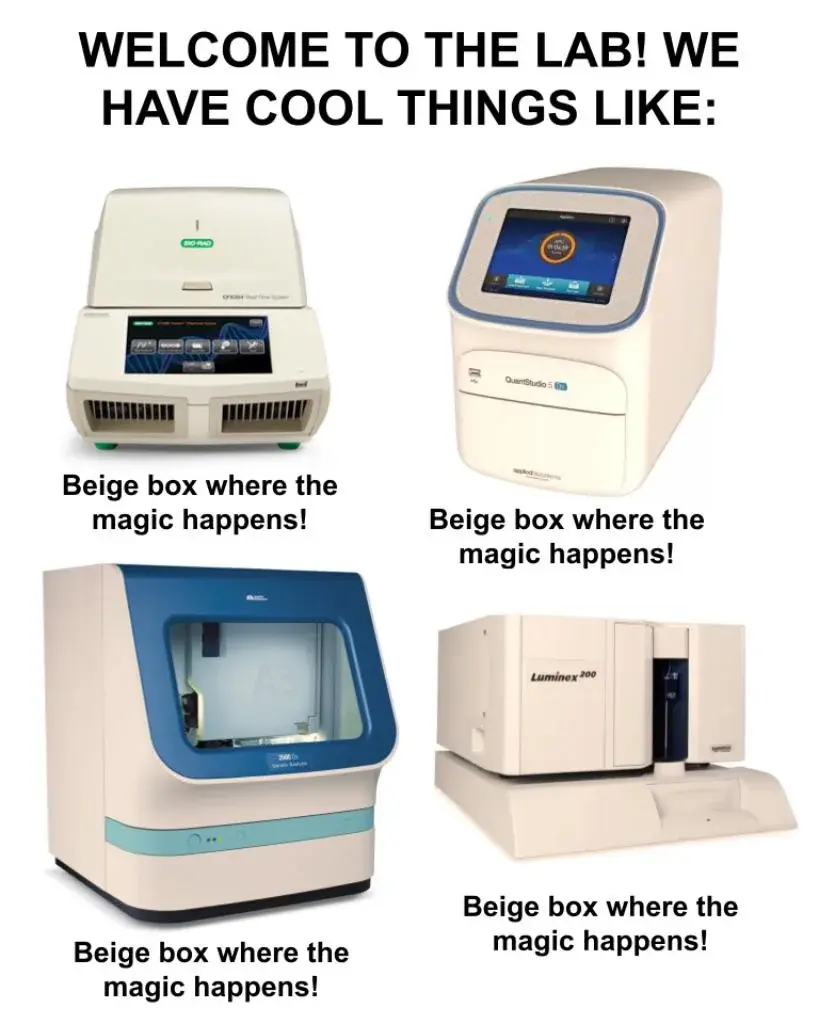this post was submitted on 01 Oct 2023
973 points (99.3% liked)
Science Memes
11542 readers
1127 users here now
Welcome to c/science_memes @ Mander.xyz!
A place for majestic STEMLORD peacocking, as well as memes about the realities of working in a lab.

Rules
- Don't throw mud. Behave like an intellectual and remember the human.
- Keep it rooted (on topic).
- No spam.
- Infographics welcome, get schooled.
This is a science community. We use the Dawkins definition of meme.
Research Committee
Other Mander Communities
Science and Research
Biology and Life Sciences
- [email protected]
- [email protected]
- [email protected]
- [email protected]
- [email protected]
- [email protected]
- [email protected]
- [email protected]
- [email protected]
- [email protected]
- [email protected]
- [email protected]
- [email protected]
- [email protected]
- [email protected]
- [email protected]
- [email protected]
- [email protected]
- [email protected]
- [email protected]
- [email protected]
- [email protected]
- [email protected]
- [email protected]
- !reptiles and [email protected]
Physical Sciences
- [email protected]
- [email protected]
- [email protected]
- [email protected]
- [email protected]
- [email protected]
- [email protected]
- [email protected]
- [email protected]
Humanities and Social Sciences
Practical and Applied Sciences
- !exercise-and [email protected]
- [email protected]
- !self [email protected]
- [email protected]
- [email protected]
- [email protected]
Memes
Miscellaneous
founded 2 years ago
MODERATORS
you are viewing a single comment's thread
view the rest of the comments
view the rest of the comments

Anyone know what all of these are?
Top right is a real time PCR instrument, bottom left is a DNA sequencer, bottom right is a type of proprietary flow cytometer. Idk top left.
Tip left looks like the thermocyclyer we used to use in my genetics labs
It's a bio-rad thermocycler.
ELI5 what any of these are?
PCR is a method of replicating specific targeted portions of DNA. To perform the method you need to regulate the temperature in a very specific pattern using a thermal cycler (top left?). This will give you 'bulk' portions of your DNA.
If instead your test was just to see of your targetted portion was present real-time PCR is the method for you. It regulates the temperature like a thermal cycler but is also able to reliably determine if DNA is is being replicated very early in the cycle.
DNA sequencer (bottom left) gets you your nucleotide sequence. I'm not familiar enough with the machine to talk about how it's doing this. It really depends how much genomic info you need.
Flow cytometry is a method of detecting fluorescence on really small things, usually with fluorescently tagged antibodies involved. Say you have a test tube of cells and you want to know how many are human B cells. We can add some tagged antibody that binds B cells, then run the sample through the instrument. It has a fluid path that separates all the cells using laminar flow and then passes them by a laser. If the laser energy excites the antibody tag it will glow and the instrument can detect that light, which tells us that our antibody stuck to that cell. We can count it as a B cell. The instrument is capable of counting thousands of these events per second.
These are very generic descriptions but you can get the idea of what is happening.
Thank you very much for this explanation!
I'm guessing PCR, ???, laminar air flow / fume hood and spectrometer.